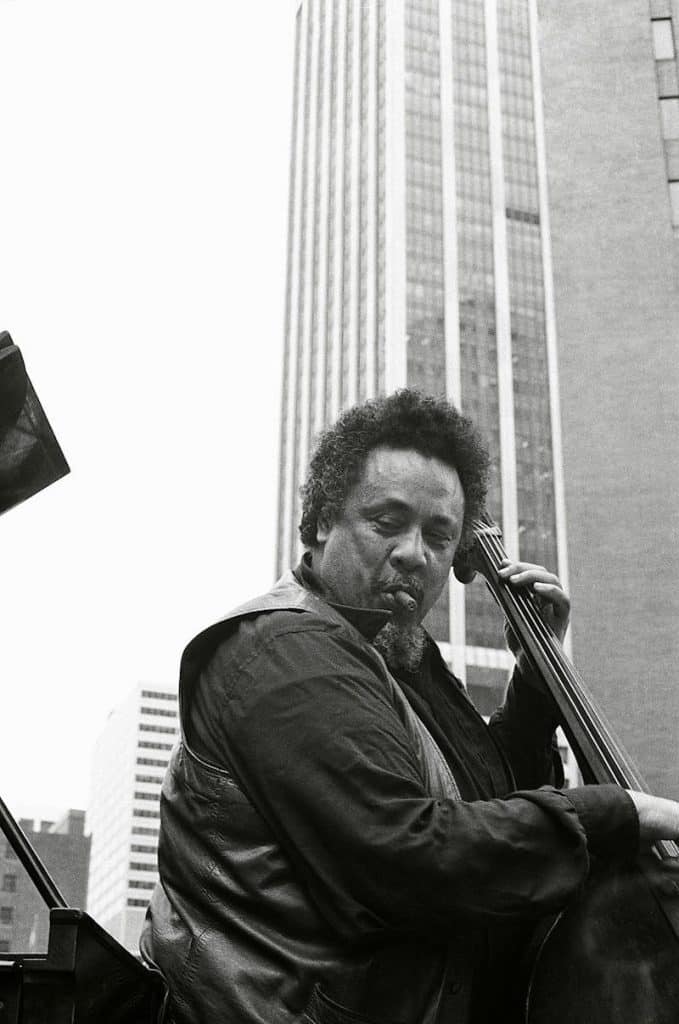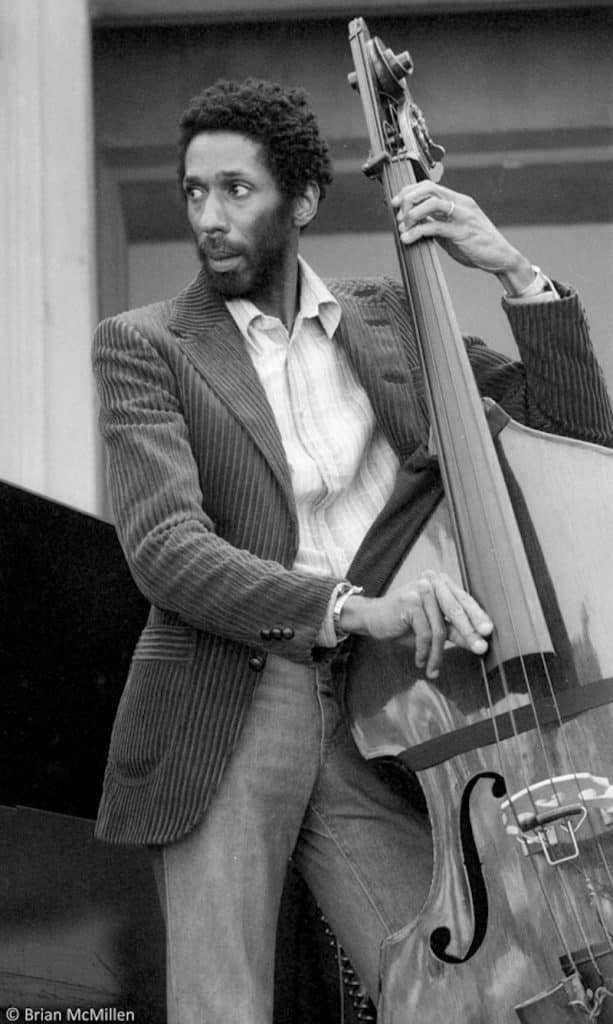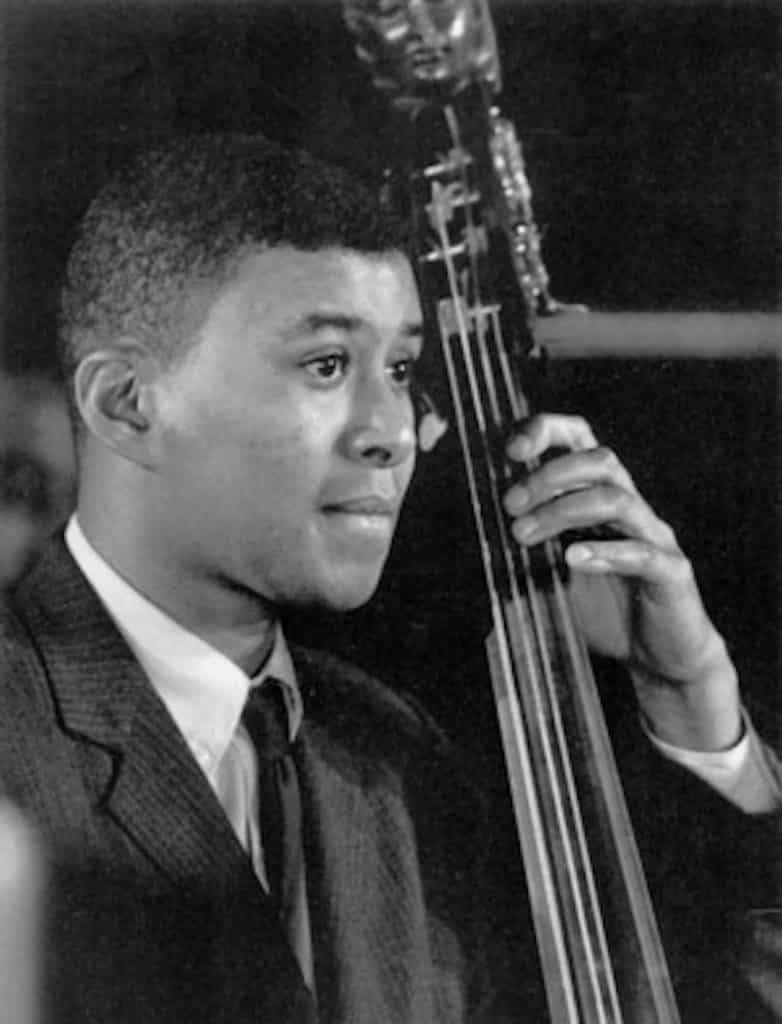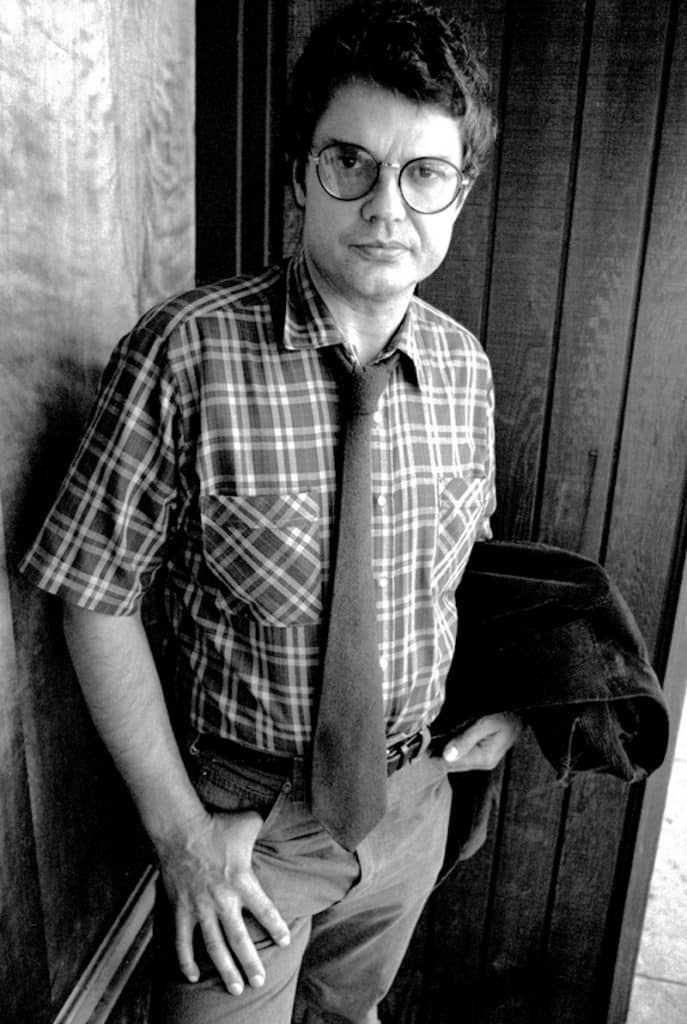Despite being such large instruments, the upright bass and players are often overlooked and don’t get the glory of musicians that play the violin, guitar, or saxophone. But, even though they don’t share the limelight they have one of the most important roles to play in all genres of music.
In this post, we’re going to take a look at 15 famous double bass players and explore their lives and the music that they’ve helped to create.
1. Edgar Meyer
Born in Tulsa, Okla., double bass virtuoso Edgar Meyer grew up in Tennessee, the son of a public school orchestra teacher.
As a bass player, he has amassed awards, including the MacArthur Award (the so-called “genius grant”) in 2002 and multiple Grammy Awards.
He has also performed and recorded with musicians as diverse as cellist Yo-Yo Ma, mandolin whiz Chris Thile, and banjo virtuosoBela Fleck.
Meyer also made a name for himself as a composer, with auspicious groups such as the Boston Symphony Orchestra performing some of his works.
He is most widely known, perhaps, for his versatility, recording jazz, classical, and bluegrass pieces, to name but a few.
2. Ray Brown
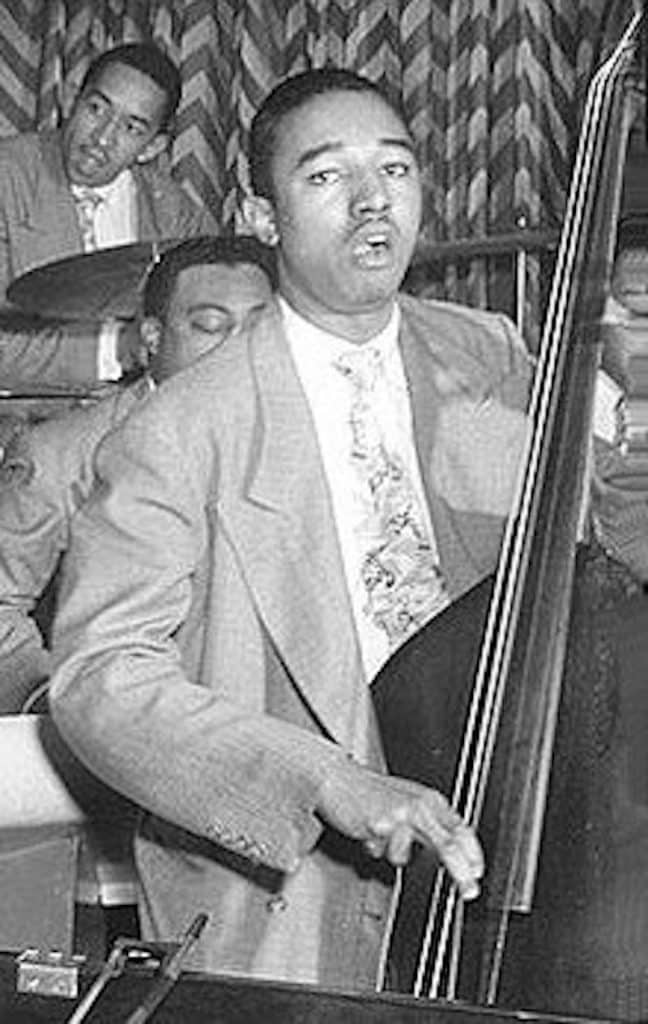
It is difficult to think of Ray Brown without thinking about two jazz giants: Dizzy Gillespie and Ella Fitzgerald.
Brown played with both and married Fitzgerald in 1947, although the marriage was short-lived.
Hailing from Pittsburgh, Brown picked up the bass in high school and used it to create a legendary career, playing with a list of names that is unrivaled as a sideman including, Charlie Parker, Frank Sinatra, Cannonball Adderley, Milt Jackson, rock with Steely Dan and even seven albums’ worth of classical music with pianist Andre Previn.
He played, recorded, and toured until his death before an Indianapolis gig in summer 2002, having left an indelible mark on jazz bass playing.
3. Esperanza Spalding
Born in 1984 in Portland, Oregon, female double bassist Esperanza Spalding was hailed by National Public Radio as the 21st century’s jazz genius
But that was after she won the 2011 Best New Artist Grammy over the likes of Justin Bieber and Drake, which made a lot of people sit up and ask, “Esper-who-za?”
After dropping out of high school in her hometown of Portland, Ore., the multi-ethnic Spalding (Welsh, African-American, Native American, and Hispanic) attained a GED, attended Boston’s Berklee College of Music, and became the institution’s youngest instructor before she was old enough to buy alcohol.
She’s won other Grammys for albums of her own compositions, and she’s performed at the Oscars and played with the likes of Prince, Herbie Hancock, and Stevie Wonder, among many others.
Playing with even one of those names would have been impressive enough.
Spalding currently serves as a professor of the practice of music at Harvard University.
4. Charles Mingus
Charles Mingus played cello as a child before moving to the bass, an instrument with which he would make an indelible mark as a player, composer, conductor, and bandleader.
He pioneered group improvisation and free jazz, although he is probably best known as a bop player, specifically hard bop.
Musicians knew and feared his temper, which led him to yell at band members and audience members alike during shows, and he once destroyed a bass onstage after getting heckled.
However, he is best remembered for his playing, which was visionary at the time, as he helped transform the bass from a foundational instrument to an expressive solo one.
He appeared with Dizzy Gillespie and Charlie Parker in their last recorded live show and founded a jazz record label with drummer Max Roach.
Mingus also wrote and published “The Charles Mingus CAT-alog for Toilet Training Your Cat.”
5. Ron Carter
After learning the cello as a child, Ron Carter took up the bass in high school.
He excelled immediately, attending the Eastman College of Music before playing (and making his bones) with Miles Davis alongside Wayne Shorter and Herbie Hancock.
Before that, he played with Cannonball Adderley and Thelonious Monk, all legendary jazz names.
The bassist has had a long recording career and as of September 2015, Carter had played on 2,221 recordings, including solo works and even a credit on a Billy Joel album in the 1980s.
He has taught at the City College of New York and currently teaches bass at Julliard in the Jazz Studies program.
6. Trevor Dunn

As well-known for his electric bass work as his double bass chops, Trevor Dunn has spent a good deal of time playing his upright with experimental composer and saxman John Zorn.
He began studying the double bass in the late 1980s, eventually performing Serge Koussevitsky’s “Concerto for Double Bass” (no small feat) in college.
After that, he started a band called Mr. Bungle, the world’s first exposure to Mike Patton, who would later front Faith No More, and has composed extensively for his avant-garde jazz act trio-convulsant.
He has recorded as a soloist and a bandleader and currently lives and plays in New York.
7. Gary Karr
After studying the double bass at Julliard, Gary Karr played “The Swan” by Camille Saint-Saëns in 1962 on a televised “Young People’s Concert” with the New York Philharmonic, conducted by famous american composer and conductor Leonard Bernstein.
This performance practically made him an overnight sensation.
As a solo bassist, Karr played worldwide and had multiple pieces composed specifically for him, and he always hoped to play the bass the way a singer sings vocal lines ‒ lyrically.
He also founded the International Society of Bassists in 1967, which today boasts members in 40 countries.
He taught at Juilliard, the New England Conservatory of Music, and Yale University, among others, and published a series of method books before retiring to British Columbia in 2001, citing the difficulty of traveling with a bass in a post-9/11 world.
8. Paul Chambers
Growing up in Detroit, Paul Chambers took up the bass as a teenager before studying under a player with the Detroit Symphony Orchestra.
When he started playing jazz, he quickly became a leader in transforming the instrument’s role in jazz from foundation to improvisational solo instrument.
He became widely known for his bowed solos, something nearly unheard of before him.
Chambers played on many recordings with Miles Davis, including the seminal “Kind of Blue,” and played with Art Pepper, Wes Montgomery, and John Coltrane.
Chambers served as the inspiration for the Coltrane standard “Mr. P.C.”
He had a prolific but short career, touring and recording regularly from 1954-68, before falling ill near the end of 1968.
Suffering from tuberculosis, Chambers died in January 1969.
9. Renaud Garcia-Fons
As a solo artist, Renaud Garcia-Fons has made seminal jazz and world music recordings, logging 16 solo albums in less than 30 years.
He is a composer but is most widely recognized as a solo bassist, often called “the Paganini of the double bass.”
In the late 20th century, the French musician played with the L’Orchestre de Contrebasses, an all-bass ensemble.
This experience opened his eyes to the possibilities of the bass as a solo instrument, leading him to speak about the instrument’s versatility, saying at one point it resembles a Spanish guitar, a guembri (a bass instrument of the Berbers) at another and even a viola or Persian violin at other times.
Perhaps the most noticeable thing about him, especially to non-musicians, is the five-string bass he plays ‒ a number common enough to electric basses but remains relatively rare in double basses.
10. Giovanni Bottesini

Before Garcia-Fons, Giovanni Bottesini was the 19th century’s Paganini of the Bass.
The Italian musician learned bass in literally weeks as a child in a practical effort to procure a scholarship to the Milan Conservatory, which he did.
He made a name for himself as a technical virtuoso, parlaying this into success as a composer and even authoring a series of bass method books from which most double bass players even today have learned.
As a composer, he wrote what remains a majority of double bass literature and several operas, concertos, and string quartets and quintets.
As a conductor, Bottesini conducted the premiere performance of Guiseppe Verdi’s opera “Aida” in 1871.
His “Concerto No. 2 in B Minor for Double Bass and Orchestra” is the quintessential bass work, as it features myriad techniques and is the ultimate test of and showcase for any player’s ability.
11. Dave Holland
British-born Dave Holland began playing jazz as a teenager.
He played behind Coleman Hawkins and Joe Henderson before he was 20 years old, and in doing so, caught the ear of Miles Davis.
With Davis, he helped create what would become known as jazz fusion before working as a sideman with various musicians and performing solo bass concerts.
As a composer and bandleader, Holland worked hard at the end of the 20th century, embracing young and old players equally and becoming a sort of de facto equal opportunity employer.
Holland, an Honorary Member of the Royal Academy of Music, found himself named a 2017 Jazz Master by the National Endowment for the Arts, among many other honors.
He taught at the New England Conservatory, the Birmingham Conservatoire in England, and Berklee College of Music.
He continues to record and perform, always pursuing the groundbreaking work for which he’s known.
12. Christian McBride
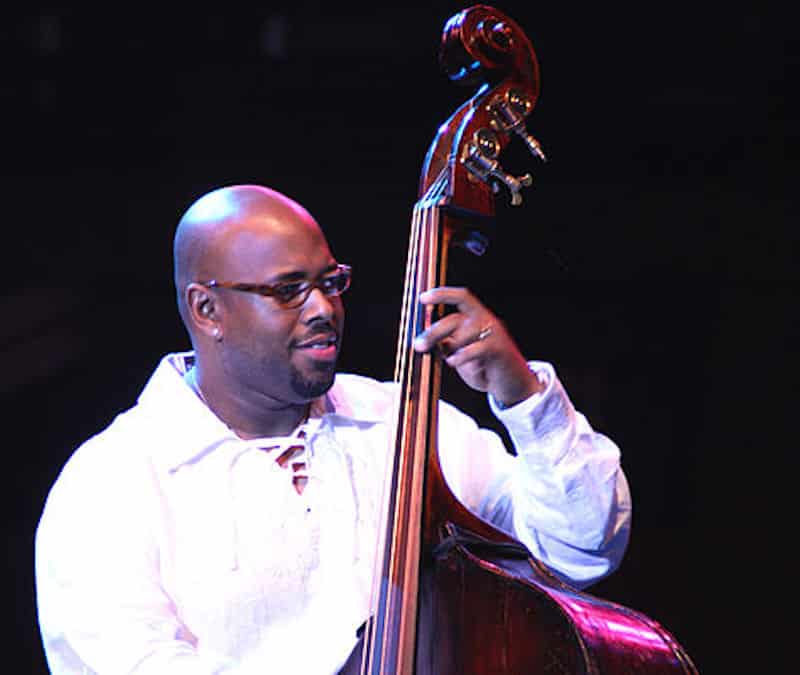
After growing up in Philadelphia, Christian McBride went on to win (to date) seven Grammy Awards and has played with a litany of big-name stars: Paul McCartney, Sting, Wynton Marsalis, The Roots, and Herbie Hancock, to name but a tiny fraction.
The son of a bass player, McBride learned bebop early.
This, coupled with stellar technique on the instrument, meant he was soon in high demand as a player.
In addition to playing with so many luminaries across many genres, McBride has solo albums and is a gifted composer.
He has served as the artistic director of the Jazz Aspen Snowmass Summer Sessions and the creative chairman for jazz of the Los Angeles Philharmonic Association.
McBride hosts NPR’s “Jazz Night in America” as well as a Sirius XM show of his own.
He is universally recognized as a virtuoso and a giant in the bass world.
13. Larry Gray
As a jazz and classical bass player and multi-instrumentalist, Larry Gray has performed with the Civic Orchestra of Chicago, Chicago Symphony Orchestra, and Lyric Opera of Chicago, among others, and with a who’s who of the jazz world, including Jack DeJohnette, McCoy Tyner, Marian McPartland, and even Doc Severinsen.
He studied the cello at Chicago Musical College, and while many bass players have a similar background, Gray is the bassist whose playing is perhaps most informed by his cello work.
He has composed several solo bass pieces, as well as music for his guitar trio.
He taught at the American Conservatory of Music, DePaul, and Northern Illinois University and currently serves as assistant professor of double bass in jazz at the University of Illinois at Urbana-Champaign.
14. Scott Pingel
As the San Francisco Symphony Orchestra’s principal bassist, Scott Pingel made a splash in the second of two collaboration concerts between the SFSO and Metallica, playing a solo bass tribute to the band’s late, beloved bassist Cliff Burton.
The video of it broke the internet in 2019.
After growing up in Wisconsin, Pingle attended the University of Wisconsin, Eau Claire, and earned a master’s degree from the Manhattan School of Music.
He currently teaches bass at the San Francisco Conservatory of Music.
15. Charlie Haden (1937-2014)
Charlie Haden started out with Ornette Coleman in the late 1950s and was credited as one of the driving forces in making the bass more than just an accompanist.
Born into a musical family in Iowa, Haden took up the bass after recovering from polio in his teens.
When he headed for Los Angeles in 1957, he became strongly associated with West Coast jazz, which is how he connected with Coleman.
As Coleman’s bassist, he was there when Coleman began exploring free jazz, so as Haden played to keep up with the saxman’s harmonies, he learned to help create those harmonies.
This led to him making a significant mark on the bass’s role in jazz for years to come.
Curiously, he also played country music as well as composing, leading bands, and teaching at the California Institute of the Arts.
He died at age 76 of complications from liver disease.
Summing up our List of the Greatest Double Bass Players
While the double bass doesn’t always get the spotlight, we hope you enjoyed our list of famous double bass players and learning about their lives and contribution to music.
We’ll be adding to this list so let us know who you think we’ve missed off and we’ll put them on!



